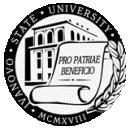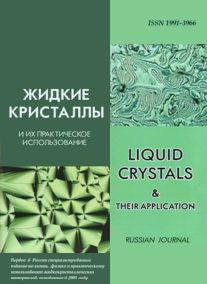|

|
Liquid Crystals and their Application
Russian Journal Zhidkie kristally i ikh prakticheskoe ispol'zovanie Жидкие кристаллы и их практическое использование |

|
|

|

|
|
|
Menu

|
|
|
|
|
Zhidk. krist. ikh prakt. ispol'z. = Liq. Cryst. and their Appl., 2019, 19 (1), 26—32.
DOI: 10.18083/LCAppl.2019.1.26 |

|
|
Kinetics of L-Lysine Mass Transfer in Reverse Microemulsions, Stabilized by AOT
|
N. V. Sautina, A. I. Rybakova, Yu. G. Galyametdinov
|
Author affiliations
Kazan National Research Technological University,
68 K. Marksa St., Kazan, 420015, Russia, Tatarstan
E-mail: n.sautina@mail.ru
|
|
Abstract
Using various physicochemical methods, self-organization processes in the water – bis(2-ethylhexyl) sodium sulfosuccinate (AOT) – isopropyl myristate system were investigated, and the ternary phase diagram was constructed. The areas of direct and reverse microemulsions, liquid crystal phase and emulsion region were found. It was determined that at certain concentrations of the components of the system, a hexagonal mesophase is formed. The microemulsion particle sizes were measured and their dependence on the degree of hydration was found. The optimal microemulsion system that can be used for the transport of substances was selected. The release of the amino acid L-lysine from the reverse microemulsions was investigated. It was shown that the guest molecule interacts with the surfactant, as a result of which the absorption maximum of the dialysate UV-spectrum shifts to the shortwave region. A cellophane film was used as a membrane. Diffusion was carried out both in water and in Ringer's physiological solution. The concentration of the diffused amino acid was determined. It was shown that the release of lysine from the microemulsion-based transport system is prolonged. The passage rate of substances through the membrane was calculated. It was shown that the rate of mass transfer in aqueous solution is higher than in Ringer's solution. The results obtained can be useful in creating effective transport systems for delivery of biologically active substances.
Keywords: microemulsion, L-lysine, phase equilibrium, liquid crystals, release
|
|
|
|
|
|




